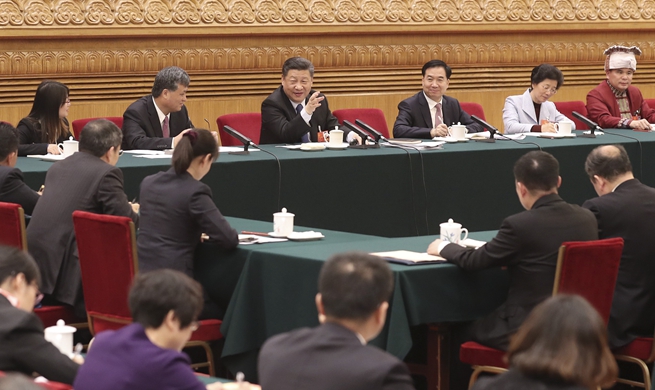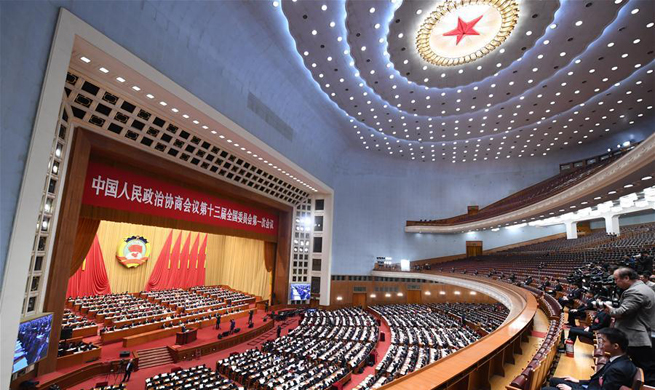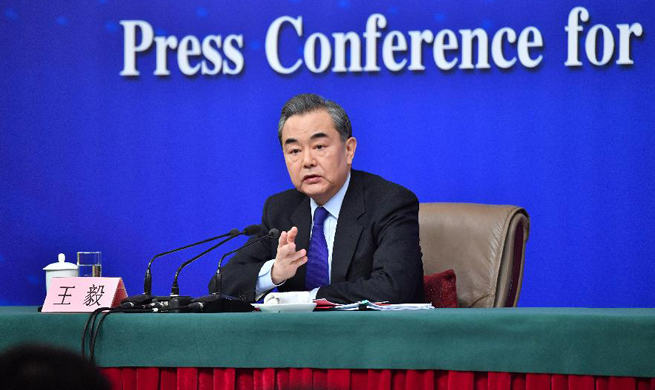by Levi J Parsons
SYDNEY, March 8 (Xinhua) -- Although Australia has a resource-based economy with mining and agriculture at the forefront of the country's past successes, business leaders are continuing to search for new opportunities to sustain growth and compete in the ever changing economic landscape.
While many Aussies argue about the best way to steer the transition out of minerals and manufacturing and into the digital workplaces of the future, it seems there's one thing everyone can agree on -- All roads lead to China.
As Australia's largest trading partner and No. 1 market for tourism and education, China's surging consumer base presents itself as an abundant area of growth if Aussie companies can figure out how to target them and what exactly it is.
So this week, the top brass of the Australian business community met in Sydney at a high-level summit to discuss the challenges and opportunities facing their industries.
With keynote speeches from Australia's Reserve Bank Governor Philip Lowe, CEO of the nation's largest mining company BHP Andrew Mckenzie and Prime Minister Malcolm Turnbull, there was no shortage of good advice on offer for Aussie entrepreneurs.
A common theme echoed throughout the meeting was that if Australian businesses want to keep thriving on the world stage, they will need to become more innovative, more specialized and more focused on pursuing ever expanding global markets like China.
CHINA'S NEXT PHASE OF GROWTH
While China's manufacturing sector has been the core engine which has driven global growth for the past number of decades, the domestically-led industrial economic model that China has used is changing.
The emergence of online e-commerce platforms like Alibaba and JD.com are perhaps the most obvious examples of this transformation.
"I have a lot of respect for the tenacity and entrepreneurialism that China has tackled the online market with," CEO of Australia's leading data innovation group Data 61, Adrian Turner, told the forum.
"They began by using western technology and innovating around business models and not the other way round."
The success of these digital giants has not only revolutionized the retail space for both buyers and sellers in the marketplace, but the development of the underlying technology appears to have awoken the country and given its digital creators a new found confidence on the world stage.
"In mid 2017 China came out and said, we are going to be the leader in artificial intelligence," Turner said.
"By 2030, they think it's going to be a 150-billion-dollar market in China. They think it's going to reframe the basis of competition worldwide and add a trillion dollars to China's GDP."
It seems that venture capitalists agree, with investment into China's AI startup sector eclipsing those in the United States.
And with this increase in "high value growth" and productivity, a sharp rise in domestic personal income is invariably set to follow.
"The combination of talent, of wealth, of infrastructure, of manufacturing capability, research and development and design capability is quite unique and all of that has the effect of creating consumption," director of the McKinsey Global Institute in China, Jonathan Woetzel, told the summit.
"And those new consumers in China, the new middle class, are importantly very different from today's middle class, they have different tastes, different expectations and different price points."
"So there is a huge new wave of consumption about to break over the world and of course Australia knows that better than anywhere else."
WHERE DOES AUSTRALIA FITS IN
But of course the reality is most of that market growth is going to be captured by companies inside of China, not outside.
In fact, it's forcast that by 2025, China will be home to one in four of the world's billion-dollar companies.
So will China's booming marketplace and increasing global buying power simply be a "China for China goal?" Or is there a role to play for foreign enterprises?
Woetzel believes the answer is definitely yes.
"But to participate in China they will have to be competitive in China and being competitive in China means being as innovative, as productive and digital as Chinese enterprises are," Woetzel said.
In order to achieve this however, Australian businesses need to identify areas where they have a natural competitive advantage.
"Either you have scale as a platform or you can present as a differentiated entity," Turner explained.
"Taking a hardline, you could say that Australia is neither of those right now."
"We don't have the scale globally that China, India or the U.S. has and we're not highly differentiated in a lot of areas, we are in some however a lot of them are analogue era areas."
But one space where Australian does have a substantial competitive advantage is the healthcare sector as the future of the industry moves from "crisis driven care" into highly personalised, data-driven "wellness management."
China, like Australia, has an aging population and in the future both nations will have to design strategies to manage this issue.
"Australia has such a good healthcare system, this is such a good opportunity for us," Turner said.
COOPERATION IS KEY
For global businesses to operate smoothly however, global relationships must be maintained.
While whispers of protectionist rhetoric have grown louder in the U.S. and some parts of Europe, China and Australia have reaffirmed their position as outward looking trading nations seeking to do business with the rest of the world.
"Free trade is self-evidently the lifeblood of the global economy, and we expect it to flourish," BHP CEO Mackenzie said in his address at the summit.
But looking beyond free trade and economic development, there is also something to be said about investing in people-to-people links.
The Torch Innovation Precinct at the University of New South Wales for example has been a huge boost for Sino-Australia business ties, with the Chinese and Australian government-backed tech facility developed to strengthen cooperation between the two countries and spark growth in the startup sector.
Other similar partnerships include the Australia-China Natural Gas Technology Fund and the Center for Southern Hemisphere Oceans Research in Tasmania -- a collaboration between Australia's national science body, the CSIRO, and China's Qingdao National Laboratory for Marine Science and Technology.
So for Australia enterprise, it would appear there are numerous opportunities to collaborate with it's regional partner in the Asia Pacific.

















